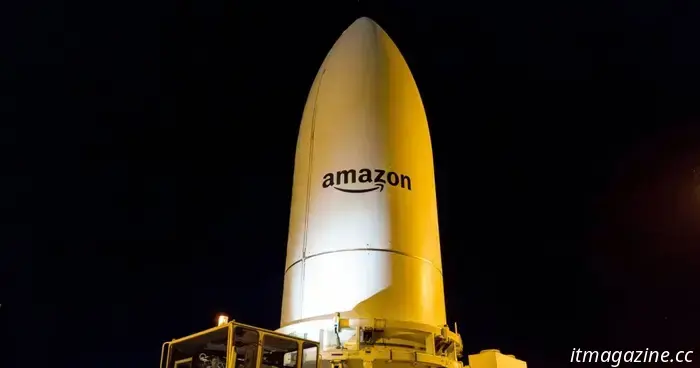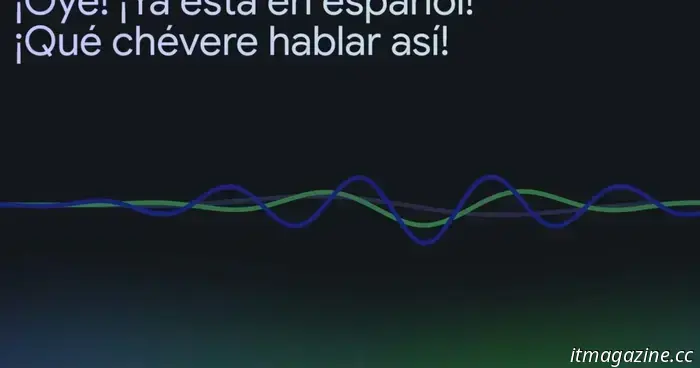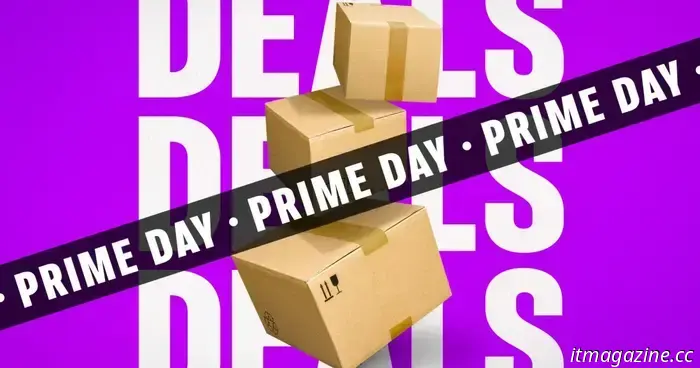
When will Amazon actually be in a position to effectively compete with SpaceX’s Starlink service?
On Tuesday, the day after Amazon introduced its initial group of operational internet satellites, the company shared on X: “Congratulations to the Project Kuiper team for a successful milestone launch this week, deploying and activating 27 broadband satellites in space. This marks an essential first step in our mission to provide fast and reliable internet to customers worldwide.”
On the same day, SpaceX’s internet satellite division announced that Starlink is now facilitating connected learning for 10,000 students globally for the first time, with 78% utilizing a computer for the first time. They added, “Test scores are improving, and more students than ever are entering university.”
As Amazon begins expanding its constellation, both companies are likely to increasingly emphasize how their internet satellites are aiding in connecting unserved and underserved communities, as well as linking individuals and businesses to the internet.
Amazon seeks to compete with Starlink, but it has significant ground to cover. SpaceX's division commenced satellite deployments in 2019 and currently has over 7,000 satellites in orbit. Earlier this week, it completed its 250th dedicated Starlink mission. The company, led by Elon Musk, has more than 5 million subscribers globally, with more than 3 million added in 2024 alone.
The recent Project Kuiper launch was the first of over 80 planned that will allow Amazon to develop a constellation comprising more than 3,200 satellites.
Amazon has set an ambitious launch campaign, planning seven more satellite deployments on ULA’s Atlas V rocket, at least 38 on ULA’s Vulcan Centaur vehicle, and several more with Arianespace, Blue Origin, and potentially even SpaceX. While SpaceX exclusively uses the Falcon 9 rocket for its Starlink launches, it has numerous operational Falcon 9 boosters, enabling frequent launches.
When might Amazon begin to compete with SpaceX to some extent? Amazon has indicated that if everything proceeds as planned, it should be capable of providing high-speed, low-latency satellite internet connectivity to customers by the end of this year. It needs to deploy around 1,000 Kuiper satellites for global coverage, but increasing the number in the constellation will enhance network performance and reliability to ensure a viable service.
Starlink’s established infrastructure and customer base have clearly provided it with a significant advantage, and industry experts believe it will be challenging for Amazon to significantly impact SpaceX’s lead in the near future.
With this in mind, it may take until at least mid-2026 for Amazon’s Project Kuiper to attain a scale where it can more directly compete with Starlink’s global coverage and market presence.
At that time, pricing and service quality will become crucial as both companies strive to attract new customers and retain existing ones.
Additionally, it's important to note that while Starlink and Project Kuiper are currently the most prominent and well-funded initiatives, the internet satellite market is becoming increasingly competitive as other companies globally launch or continue to develop similar services.
Other articles
 The Galaxy S25 Edge from Samsung might feature an unexpectedly robust camera.
The upcoming slim flagship from Samsung may be more compact than the S25 Ultra, yet it is rumored that the S25 Edge will still feature an exceptional camera.
The Galaxy S25 Edge from Samsung might feature an unexpectedly robust camera.
The upcoming slim flagship from Samsung may be more compact than the S25 Ultra, yet it is rumored that the S25 Edge will still feature an exceptional camera.
 Good luck getting to sleep tonight after you see the Weapons trailer.
In the initial trailer for Weapons, writer-director Zach Cregger creates a unique horror experience that is sure to haunt your dreams.
Good luck getting to sleep tonight after you see the Weapons trailer.
In the initial trailer for Weapons, writer-director Zach Cregger creates a unique horror experience that is sure to haunt your dreams.
 Google introduces Spanish and French to NotebookLM in a significant language update.
Google has included more than 50 additional languages to its well-liked AI-generated podcast feature in NotebookLM.
Google introduces Spanish and French to NotebookLM in a significant language update.
Google has included more than 50 additional languages to its well-liked AI-generated podcast feature in NotebookLM.
 Prime Day 2025 has been announced: dates, memberships, discounts, and additional details.
When does Prime Day take place? Is a Prime membership required to make purchases during the event? We have the information you need.
Prime Day 2025 has been announced: dates, memberships, discounts, and additional details.
When does Prime Day take place? Is a Prime membership required to make purchases during the event? We have the information you need.
 Are you prepared for more enchantment? The Four Horsemen are back in Now You See Me: Now You Don’t.
The Four Horsemen return for additional tricks and intricate heists in the trailer for Now You See Me: Now You Don't.
Are you prepared for more enchantment? The Four Horsemen are back in Now You See Me: Now You Don’t.
The Four Horsemen return for additional tricks and intricate heists in the trailer for Now You See Me: Now You Don't.
 Google I/O 2025: All the essential information you should know
Google I/O 2024 This article is part of our comprehensive coverage of Google I/O Updated under 4 hours ago It's nearly that time of year for Google I/O once more, and according to Google, this year's event will showcase software developers the “latest developer tools and explore how they drive innovation and improve [your] workflow […]
Google I/O 2025: All the essential information you should know
Google I/O 2024 This article is part of our comprehensive coverage of Google I/O Updated under 4 hours ago It's nearly that time of year for Google I/O once more, and according to Google, this year's event will showcase software developers the “latest developer tools and explore how they drive innovation and improve [your] workflow […]
When will Amazon actually be in a position to effectively compete with SpaceX’s Starlink service?
Amazon has launched its initial Project Kuiper internet satellites into orbit, but when will it be able to effectively compete with SpaceX's Starlink?
